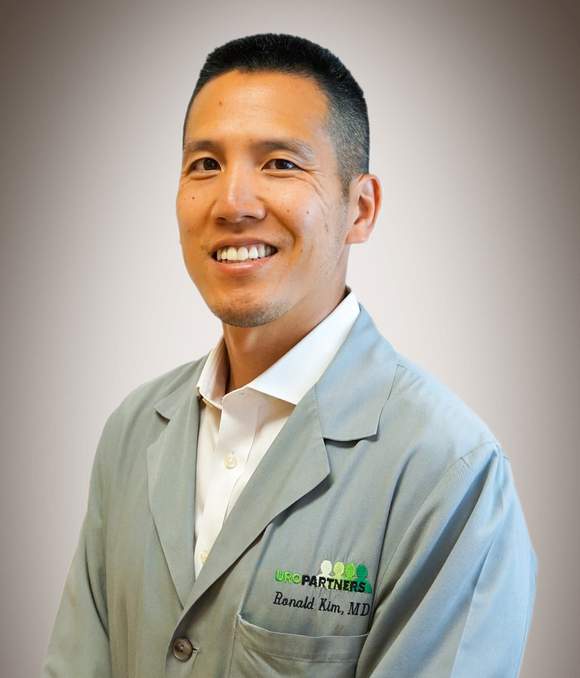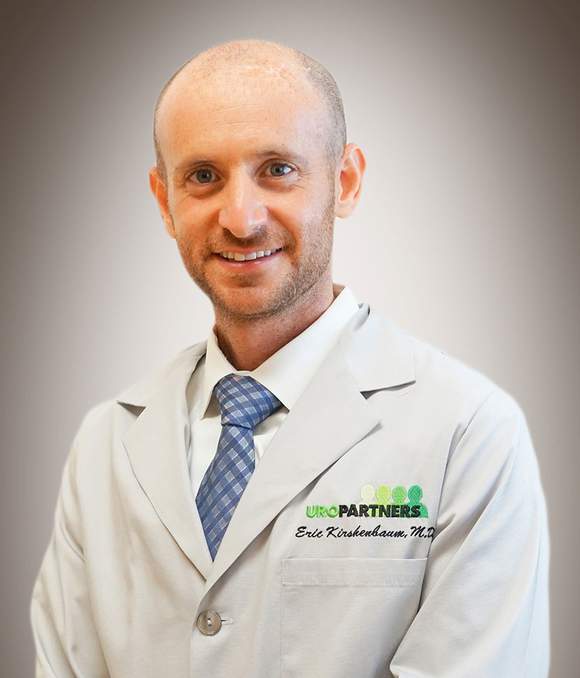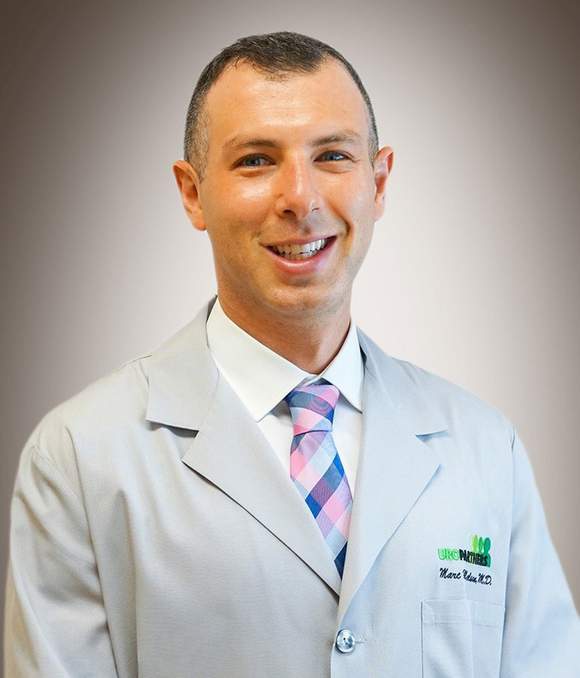
Ronald Kim, M.D. Urologist
Botox: Who knew?
“Suddenly, almost out of the blue, a patient I’ll call ‘Susan’ found she was often unable to make it to the bathroom in time,” remembered Dr. Ronald Kim, a urologist on the Froedtert South Medical Staff. “She was using three or four incontinence pads a day just to get by.”
Officially, the condition is called overactive bladder incontinence, but it’s more commonly known as urinary leakage. As many as thirty-three million Americans - thirty percent of all men; forty percent of all women – suffer with its symptoms, some longer than necessary.
“I see women every day that just live with it, rather than saying something to their doctor,” Dr. Kim said. “Some see the adult incontinence products as what you do when you have this problem, instead of going to their doctor.”
“As patients get older, particularly women, their bladder may become uncontrollable,” Dr. Kim said. “When they have to go, they can't hold it, potentially causing them to have an accident. That makes many normal activities such as going grocery shopping, eating out, or traveling difficult.”
“My message for women suffering with these symptoms is simple: it can be treated,” Dr. Kim said, “and not only with pills.”
“There are many drugs to treat this condition, but many patients choose to forego drugs, or may be at a point where drugs no longer give them relief,” Dr. Kim said, “Plus, the medications have many side effects such as constipation, dry mouth, and heart burn. Some can also be associated with dementia.”
“There are procedures to treat overactive bladders other than medications, but many people aren’t aware of them,” Dr. Kim said. “For example, Botox. It’s a procedure that we perform every day here, yet many people don't know about it. Many people think Botox is just used for cosmetic purposes.”
“The bladder is like a balloon,” Dr. Kim said. “It fills up with urine and then squeezes it out. Some people can't control the squeezing out, so we inject Botox into the muscle lining their bladder to partially paralyze it, so it doesn't squeeze when you don't want it to.”
This outpatient procedure is performed in the clinic, takes about an hour to perform, and does not require general anesthesia.
Typically, Botox is covered by insurance, and can save people money they’re spending on adult incontinence products,” Dr. Kim said. “Depending on the individual, the treatment can last between four months and a year before it is repeated.”
“Another treatment we offer is called sacral neuromodulation that involves implanting a small device similar to a pacemaker near the patient’s tailbone to send electric signals to the bladder to quiet it down,” Dr. Kim said. “This is an FDA approved technology that has been around for decades and has no side effects.”
“When it comes to urinary urgency and incontinence, we offer patients the same treatments they can get in Milwaukee, Chicago, or anywhere else,” Dr. Kim said, “only we’re right here in Pleasant Prairie, close to home.”

Eric Kirshenbaum, M.D. Urologist
Getting their life back
“A patient I’ll refer to as ‘Jim’ always had to know that a bathroom was nearby,” said urologist Dr. Eric Kirshenbaum with the Froedtert South Medical Staff. “He also had been waking up in the night to go to the bathroom for years. It really lowered his quality of life.”
“These symptoms are typical in men who have an enlarged prostate,” Dr. Kirshenbaum said. “Frequency of urination, waking up at night to urinate, a weak stream, or urinary retention - when the bladder doesn’t empty completely - are all common symptoms.”
“We have several different options to treat an enlarged prostate,” Dr. Kirshenbaum said, “including medications. When I first see a new patient, I take a detailed history. If they have been on medications, we might start by switching to another drug.”
“If a patient doesn’t want to be on lifelong medications, or if their symptoms aren't controlled well enough on medications, then we will perform tests to determine the cause of their urinary symptoms and identify the different treatment options available to them,” Dr. Kirshenbaum said. “Then we will have a conversation about their goals and preferences so we can tailor the treatment plan to achieve what they want to accomplish.”
“There are a few minimally invasive treatments that we do here in the office,” Dr. Kirshenbaum said. “Often, they take only fifteen to twenty minutes. One of these is steam therapy. We inject steam into the prostate through a catheter. Over the next three to four weeks, the prostate tissue causing their symptoms disappears, improving their symptoms.”
“That’s the treatment I performed on ‘Jim,’” Dr. Kirshenbaum said. “He recovered quickly and was pleased with the results. He told me, ‘When I go to the bathroom, I feel like I am twenty again.’”
“We use another minimally invasive treatment that holds a patient’s prostate open using special clips, permitting better urination,” Dr. Kirshenbaum said. “We also have a new procedure using a device that stretches the prostate, killing some of the blocking tissue by compressing it to allow the urine to flow better afterwards. And, in cases involving very large prostates, we can perform a minimally invasive robotic assisted procedure to remove a large part of the prostate.”
“Urinary problems can be overwhelming and debilitating for patients who find themselves constantly looking for a bathroom, or planning road trips based on the availability of bathrooms,” Dr. Kirshenbaum said. “After treatment, these patients often get their lives back.”

Marc Nelson, M.D. Urologist
Safe and effective birth control
“A patient we will call ‘Bill’ was frankly shocked by how easy his vasectomy was,” said Dr. Marc Nelson, a urologist on the Froedtert South Medical Staff.
“Like most patients, ‘Bill’ and his wife were happy with the size of their family, and were looking for a permanent alternative to the other forms of contraception such as abstinence, condoms, inter-uterine devices, or birth controls pills,” Dr. Nelson said. “Vasectomy is nearly one-hundred percent effective, and carries lower risks than a similar procedure for women called tubal ligation.”
“I see all patients interested in vasectomy for an in-depth consultation prior to the procedure,” Dr. Nelson said. “I want to make sure patients understand that a vasectomy is considered permanent. There are some expensive options to potentially reverse a vasectomy, but they do not always work. I also want patients to know that they won't be sterile right away. They will need to use a second form of contraception until a test confirms that they are sterile about two months after the procedure.”
“We perform the procedure in our office and it only takes about fifteen minutes,” Dr. Nelson said. “The patient remains awake, though I usually give them a mild medication to help them relax. After the procedure, I advise patients to rest for a day or two and then they are back on their feet.”
“It is an extremely effective procedure and men do really well with it,” Dr. Nelson said. “Most people at some point in their lives know they don't want to have kids anymore, but they are still biologically capable. I want more men to know that vasectomy may be an option for them. It's a really safe way to ensure you won’t have any more kids.”
Urology by the Numbers
Enlarged prostate affects:
- Millions of men
- 50% between ages 51 and 60
- 90% over 90 years old
Overactive bladder affects:
- Up to 33 million U.S. adults
- 30% of men
- 40% of women
Vasectomy:
- 500,000 performed in the U.S. each year
- 5% of all married men of reproductive age have had a vasectomy
- Vasectomy failure rate is 1 in 10,000 cases
Condom failure rate is 1 in every 100 uses
